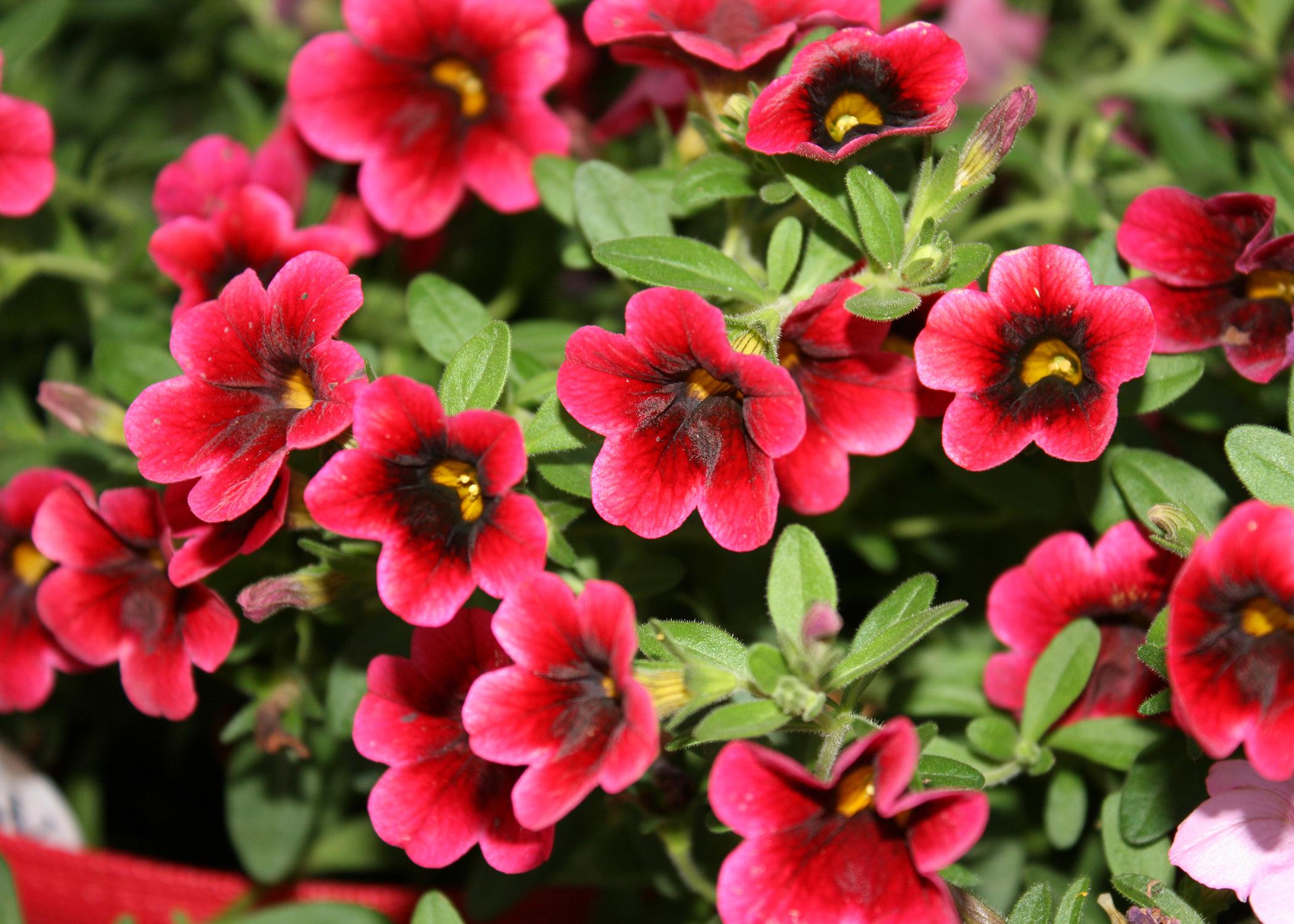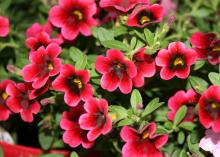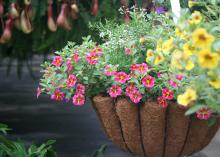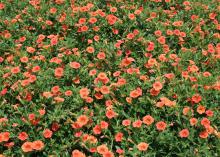Information Possibly Outdated
The information presented on this page was originally released on January 27, 2014. It may not be outdated, but please search our site for more current information. If you plan to quote or reference this information in a publication, please check with the Extension specialist or author before proceeding.
Hybrid Superbells are a colorful garden hit
Garden catalogs are arriving in my mailbox at a pace I haven’t seen in quite a few years. Every day, a new catalog tries to tempt me to plant the latest and greatest this spring. The parade of polar vortexes with extreme low temperatures is only making matters worse.
During a cold winter, people ask what garden and landscape plants are not going to make it. I always tell folks we’ll just have to wait until spring to see which plants “wake up” and start growing.
But thanks to the catalogs, one thing I do know is that we won’t have to worry about adding annual color when the temperature eventually rises.
I always like the look of Supertunias, with their large spread and big, funnel-shaped flowers. And who doesn’t like the abundant flowering of the calibrachoa, which lives up to its common name of million bells. These plants look great in containers, hanging baskets and massed in landscape beds.
This year, I’m going to concentrate on a hybrid that combines the best of petunia and calibrachoa, so of course it’s called Superbells. These are tough plants with good summer heat tolerance. One of the attributes I like about Superbells is that they recover and perk up faster after a rainstorm than many other summer-flowering annuals.
I’m also impressed with the range of colors available in Superbells.
In 2013, I had a few absolute favorite colors. Cherry Star has a bright, cherry-red flower with a yellow starburst in the center. Lemon Slice has a bright, cheerful yellow flower that has a white pinwheel pattern in the center. Saffron flowers have golden-yellow petals with red highlights in the center. Dreamsicle is a bright orange that reminds me of the frozen treats we always bought from the ice cream truck on hot summer afternoons.
Pomegranate Punch is a new color for 2014. These flowers have deep velvet-red petals and an almost black center eye. I was fortunate enough to trial Pomegranate Punch in my garden last year, and the plants flowered all summer long. I greatly appreciate their heat-tolerant flowering in my landscape, especially in south Mississippi where petunias start to fade in late summer.
Superbells grow up to 10 inches high, and their trailing and spreading growth hangs over the edges of containers. In the landscape, Superbells can spread and scramble up to 48 inches wide, depending on the variety. Landscape soil needs to be well drained, as these plants don’t like to have wet feet. Raised beds or containers are a must.
To keep the plants blooming all summer, feed them with a balanced, controlled-release fertilizer. Put a tablespoon of this fertilizer in the planting hole to get the plants off to a good start. Regular applications of a water-soluble fertilizer will maintain the nutrition at optimum levels, keeping the foliage dark green and the flowers blooming nonstop.
At planting, use sharp scissors to snip the branches back a little bit to encourage thicker growth. The plants may open up a little bit during the summer, so go ahead and give them an overall trim when that happens.
Because pruning stimulates more growth and Superbells tolerate it well, trim them anytime the plants get a little untidy. Be sure to fertilize right after these trimmings.
So, as you dream about your 2014 garden and landscape, start making plans to include Superbells this summer.










